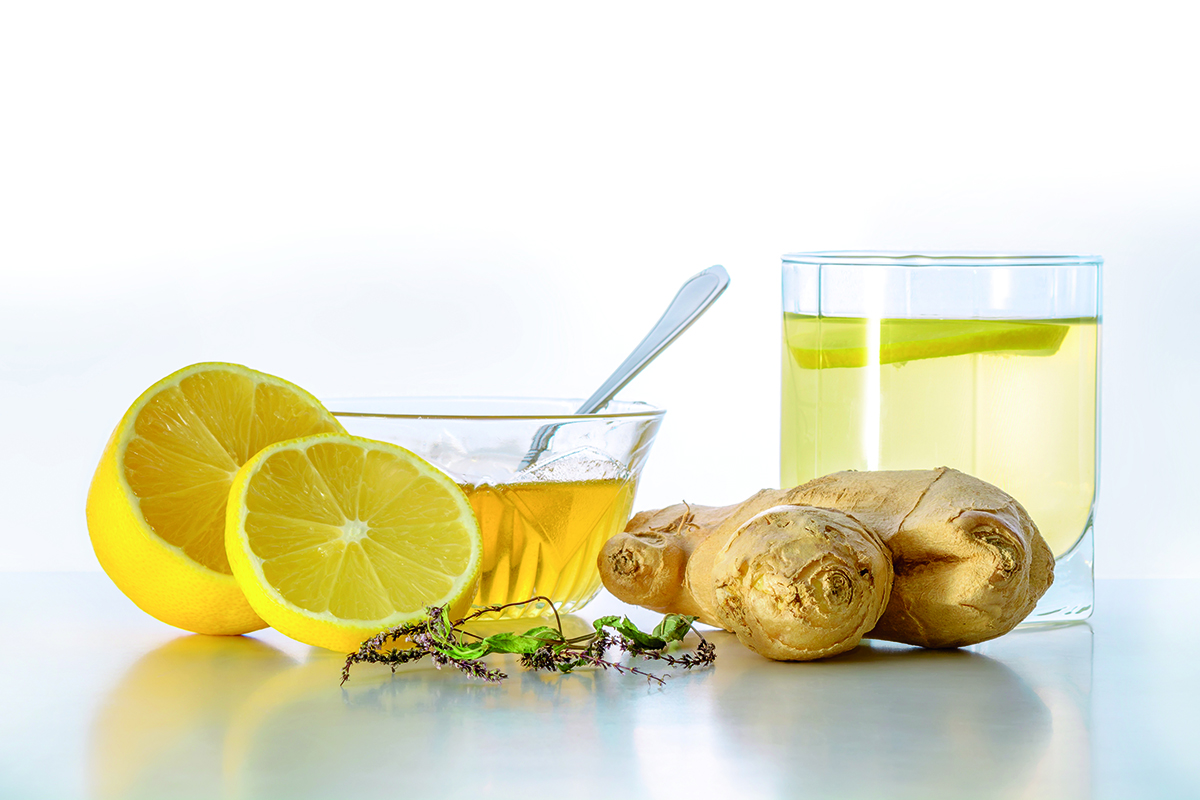Ginger's Genius

A spice native to Asia, ginger's use in cooking or as a condiment dates back at least 4,400 years.
It has a distinctive hot, pungent aroma and flavor that is essential to many modern and traditional dishes, such as curry and chutney.
Historically, this plant was referred to as “the great cure” and was one of the most essential components of household folk medicines.
The wealth and diversity of chemicals present in the rhizomes (rootstalk) of this tasty medicinal and spice plant are responsible for its flavor, aroma, and healing properties.
The trade of ginger began with maritime circulation throughout India, China, and Indochina, and by the eighth century, it was commonly traded throughout the Mediterranean region.
Ginger was well known in Europe by the 11th century, when Greeks and Romans considered it a favorite spice, second only to black pepper. The spice has been incorporated into folklore— you may be familiar with the children’s folktale of the gingerbread man.
And Henry the Eighth recommended consumption of ginger as a preventive measure against the Black Plague.
An interesting example of its cultural relevance is the traditional red egg and ginger party in China. Newborns are often welcomed with a celebration that includes an announcement package of red-dyed, hard-boiled eggs and ginger root.
Ginger can be found fresh or dried. The fleshy rhizome is first washed and peeled, then sliced, grated, or cooked whole.
Pickled in sweet vinegar, ginger is a common palate cleanser in Asia, accompanying meals like sushi. Crystalized or preserved ginger is consumed as a confectionary treat and is the key spice ingredient in gingerbread, ginger beer, and ginger ale.

Cassandra Quave, Emory assistant professor and medical ethnobotanist. Quave explores ways we identify, collect, and transform foods and how we determine the role they play in our diets. Her podcast can be found on soundcloud.com by searching for Foodie Pharmacology.
The origins of gingerbread may date back to the ancient Greeks, who wrapped ginger in bread and ate it after meals as a digestive aid.
Dried and powered ginger is also used in various recipes for biscuits, cakes, cookies, puddings, soups, and pickles.
I like to keep a couple of fresh ginger roots in my kitchen in case I’m feeling under the weather, have a stomach ache, or just need something warm and comforting on a dreary day.
There’s nothing quite as simple and delightful as ginger tea. Just turn the kettle on to boil, wash and peel the outer skin of the ginger root, and grate a tablespoon or two directly into the tea cup.
When the water is ready, pour it onto the grated root, perhaps adding a dollop of honey, and you’ve got a delicious brew. Taken internally, ginger is thought to be a neuro-stimulant, improving impulse transmission and relieving pain.
Consumption of ginger prepared with honey is a classic remedy for asthmatic bronchitis, hiccups, coughs, and colds.
It is also used for the digestive system to improve appetite and digestion, help with gas pains, and even treat hemorrhoids.
Today, ginger is commercially cultivated in at least 34 countries.
There are studies showing that ginger has anti-inflammatory properties, potent anti-oxidant compounds, and anti-nausea effects. It may even discourage the growth of cancer cells.
Ginger is generally recognized as safe by the FDA; however, pregnant women are discouraged from using it.
While we still have much to learn, this fascinating botanical species is a good place to start in the development of some serious health-boosting solutions.
Email the Editor




